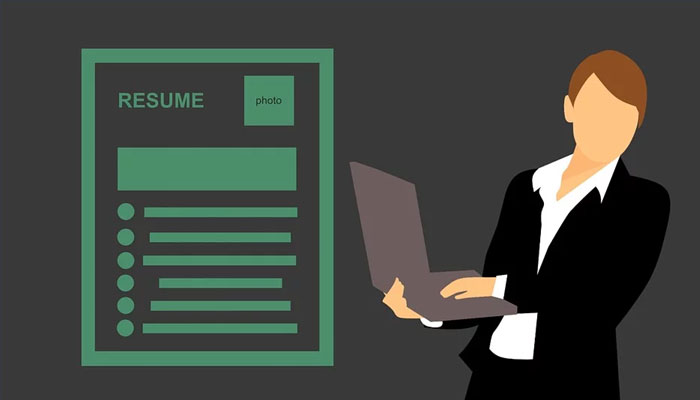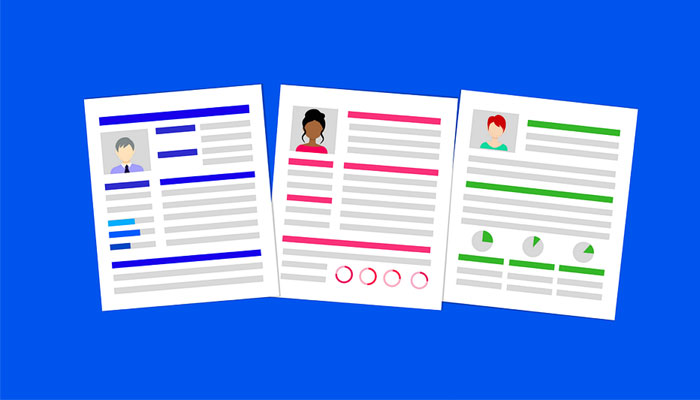An appealing design of the resume can give you a heads up. It is the first impression of you and if it is positive, you will be seen in a positive light overall. This increases your chances even before the content of your application is read.
The design of the resume

We see someone at a party who is dressed very well. We automatically assume that in addition to good taste and good manners, this person must also probably have a well-paid job to be able to afford appropriate clothing.
However, we assume this without having the slightest proof, since we have not yet spoken to the person. Your well-designed resume works the same way.
The design of the resume speaks for you during the initial conversation and the person conducting the interview is already under the impression that you are a knowledgeable and resolved person.
Design is an integral part of the Resume. If you don’t know how to design a resume, you usually start with designing it and then filling the information. The most important thing about the resume is that It must be clear and structured.
You consider the following in the layout while making a resume.

1. The information should be neatly arranged one below the other. Arrange the data consistently and legibly.
2. Your font should be 10 to 12 points in size. You can choose a bold headline as ‘Resume’ and the information in subheadings.
3. If you want to emphasize individual details in bold, keep this scheme consistent. For example, you either bold all previous employers and job titles, or none.
4. Your information itself should also be structured uniformly. Either discuss the times with month and year or not at all.
5. Your resume and cover letter should form a unit. This means that they should complement each other in terms of content and also match visually. Use the same font for your CV as in the cover letter.
6. Your resume should be a maximum of two pages long. If you are a student, one page is enough.
7. Your resume ends with the location and date and your signature at the bottom left.
How to Make a Resume – Design according to the profession

You must also know the difference between various professions, professionals and their characteristics to make a resume that is in accordance with your profession.
For example, if you are applying for the position of a pilot and your resume is more artistic and flamboyant rather than informative, the chances of your application to be frowned upon are very high as it does not display the personality traits that the employer is looking for.
There are six different categories, various job applicants can be defined under and you need to know about them and categorize yourself to make a resume for yourself.
Here are their personality traits that have to reflect in their resume.
Creative Profiles
Creative people are artistic, intuitive, sensitive and expressive. They are unstructured, original and innovative. They rely on their feelings, imagination, and inspiration.
For example, Architect, graphic designer, journalist, photographer, and others lie under this category.
Science and Technology
Researchers are intellectual, self-observing and curious. They are inquisitive, methodical, rational, analytical and logical. They excel in tasks that are academic, scientific or technical.
Profiles like economists, engineers, programmers, psychologists, historians appear under this category.
Social Workers
People with a social orientation are friendly, generous, cooperative, patient, caring, helpful and sensitive.
Social workers, teachers, educators, doctors, the trainer are profiles enlisted under this category.
Entrepreneurs
Entrepreneurial people are adventurous, ambitious, assertive, extroverted, energetic, confident and optimistic. They are dominant, convincing and motivating.
Retail merchants, lawyers, IT project managers, real estate agents are included in this category
Banking
Conventional people are hard-working and conservative. They are logical, efficient, reliable, neat and organized. They are detail-oriented and value precision and accuracy.
Accountants, auditors, office workers, secretaries, bank clerks are examples of this profile.
Practically Skilled
Practically oriented people are independent, purposeful and sincere. They prefer to deal with things rather than abstract ideas. They are the doers.
Pilot, jeweler, electrician, security officer, athletes are examples of practically skilled people.
Your resume should match your profile and display what you are good at through its design.


